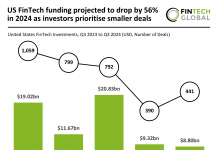Digitalisation is rapidly transforming investment management and firms are making it a priority. Bricknode, a cloud financial services software developer, has released a new report titled ‘Digital transformation in investment management’. In the report, it covers how cloud and software-as-a-service (SaaS) models are helping investment management firms of all sizes transform their digital services.
Some of the key areas it explores are the technology challenges facing investment management firms, the role of cloud services in digital transformation, key steps for adoption and how SaaS is being used.
The report kicks off by stating that the investment management sector has been slow to adopt digital capabilities. With a heavy reliance on legacy systems and processes, there has been little effort to shift.
However, times have changed, and firms cannot afford to put digitalisation on the backburner. The pandemic has been an obvious catalyst of this. Firms have had to transform their operations to survive in a remote world, whether that is staff working from home or customers moving to online services.
One of the biggest drivers for digitalisation has been the change in customer behaviour. Bricknode states that “Customer behaviour is changing rapidly, especially in the wealth management sector where tech-savvy younger age groups want to engage digitally with their financial advisers and money managers.”
It also highlighted the pressure from online-only discount brokers and regulatory burdens becoming too much for those to rely on manual workloads.
The time for digital transformation has come.
A recent survey from PwC found that investment managers see FinTech as a way to lower costs, improve differentiation and access additional revenues. Despite this, firms are still slow to adopt. Bricknode believes this is because many have focused on building their own replacement financial infrastructure or buying the latest ‘off-the-shelf’ solution. The problem is both methods take a long time to complete and are very expensive.
This is why many are moving towards cloud computing. While this has been around for ten-15 years, it is only just starting to take off, Bricknode said. Cloud computing leverages a network of remote servers hosted on the internet to store, manage and process data, rather than local servers of personal computers.
Bricknode said, “The key benefits of cloud are clear. It requires little capital investment. It is constantly available. Its applications are always up to date. It is “elastic”, meaning you can rapidly increase or reduce usage without having to worry about re-deploying your own IT or staff. You only pay for what you use, or the period you use it. And, as it is an operational not a capital expense, it is usually more tax efficient.”
It also described the move to cloud computing as the most significant change in the market.
Steps for cloud services adoption
While firms might be eager to adopt the technology, there are many questions they first need to resolve.
Bricknode highlighted some of them. Which IT services should be on-premise and which should be in the cloud, should there be a private cloud, public cloud or hybrid cloud, which service model should be used, infrastructure-as-a-service, platform-as-a-service or software-as-a-service, and many more.
It went on to help firms understand what to have in the cloud and what to have on-premise. It said, “Large, long-established firms may prefer to keep their core IT and general purpose workloads in their own data centres because they believe it is cheaper in the long term and, perhaps safer. However, an increasing number of larger firms, and all start-ups, have a “cloud- first” strategy, meaning their default position is to choose the cloud.”
The report also highlights the differences between a public, private and hybrid cloud. It stated that public cloud services are delivered through the public internet and are cheap and flexible. However, it could give users the sense they lack control over the service and security.
As for private cloud networks, these address the setbacks of the public cloud by giving companies more control. Finally, the hybrid cloud uses a mixture of both public and private cloud services and is becoming increasingly popular.
Read the full report here to find out more about the digital transformation of wealth management.
Copyright © 2022 FinTech Global











